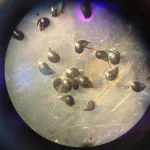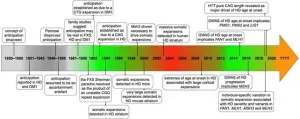Climate research: rapid formation of iodic particles over the Arctic
More clouds could cause ice to melt faster - Goethe University research team investigates aerosol formation from iodine-containing vapours in international CLOUD project
2021-02-11
(Press-News.org) FRANKFURT. More than two thirds of the earth is covered by clouds. Depending on whether they float high or low, how large their water and ice content is, how thick they are or over which region of the Earth they form, it gets warmer or cooler underneath them. Due to human influence, there are most likely more cooling effects from clouds today than in pre-industrial times, but how clouds contribute to climate change is not yet well understood. Researchers currently believe that low clouds over the Arctic and Antarctic, for example, contribute to the warming of these regions by blocking the direct radiation of long-wave heat from the Earth's surface.
All clouds are formed by aerosols, suspended particles in the air, to which water vapour attaches. Such suspended particles or aerosols naturally consist of dusts, salt crystals or molecules released by plants. Human activities cause above all soot particles to be released into the atmosphere, but also sulphuric acid and ammonia molecules, which can cluster and form new aerosol particles in the atmosphere. Model calculations show that more than half of the cloud droplets are formed from aerosol particles that have formed in the atmosphere. For the formation of clouds, it is not decisive what the aerosol particles are made of; what matters most is their size: Aerosol particles only become condensation nuclei for cloud droplets from a diameter of about 70 nanometres and up.
In the atmosphere over the sea, aerosols released by humans play a much smaller role in the formation of low clouds than over land. Besides salt crystals originating from sea spray, aerosol particles over the sea mainly originate from certain sulphur compounds (dimethyl sufide) that are released from phytoplankton and react to form sulphuric acid, for example. At least, that is what previous research concluded.
Scientists from the CLOUD consortium have now studied the formation of aerosol particles from iodine-containing vapours. The slightly pungent smell of iodine is part of the aroma of the sea air you breathe when walking along the North Sea. Every litre of seawater contains 0.05 milligrams of iodine, and when it enters the atmosphere, iodic acid or iodous acid is formed through sunlight and ozone. The scientists simulated atmospheric conditions in mid-latitudes and arctic regions in the CLOUD experimental chamber at the CERN particle accelerator centre in Geneva, including cosmic rays simulated by an elementary particle beam.
Their findings: aerosol particle formation by iodic acid takes place very rapidly, much more rapidly than the particle formation of sulphuric acid and ammonia under comparable conditions. Ions produced by cosmic rays further promote particle formation. For the transformation of the molecular iodine into the iodine-containing acids, not even UV radiation and only a little daylight are necessary. In this way, very large aerosol quantities can be formed very quickly.
Atmospheric researcher Prof. Joachim Curtius from Goethe University explains: "Iodine aerosols can form faster than almost all other aerosol types we know. If ions produced by cosmic rays are added, each collision leads to the growth of the molecular clusters." Curtius added that this is particularly important because global iodine emissions on Earth have already tripled over the past 70 years. "A vicious circle may have been set in motion here: The pack ice thaws, which increases the water surface area and more iodine enters the atmosphere. This leads to more aerosol particles, which form clouds that further warm the poles. The mechanism we found can now become part of climate models, because iodine may play a dominant role in aerosol formation, especially in the polar regions, and this could improve climate model predictions for these regions."
INFORMATION:
The CLOUD experiment (Cosmics Leaving OUtdoor Droplets) at CERN studies how new aerosol particles are formed in the atmosphere out of precursor gases and continue to grow into condensation seeds. CLOUD thereby provides fundamental understanding of the formation of clouds and particulate matter. CLOUD is carried out by an international consortium consisting of 21 institutes. The CLOUD measurement chamber was developed with CERN know-how and is one of the cleanest experimental rooms in the world. CLOUD measurement campaigns use a variety of different measuring instruments to characterise the physical and chemical state of the particles and gases that make up the atmosphere. The team led by Joachim Curtius from the Institute for Atmosphere and Environment at Goethe University Frankfurt develops and operates two mass spectrometers in the CLOUD project to detect trace gases such as iodic acid and iodous acid even in the smallest concentrations.
ELSE PRESS RELEASES FROM THIS DATE:
2021-02-11
Low-income middle-aged African-American women with high blood pressure very commonly suffer from depression and should be better screened for this serious mental health condition, according to a study led by researchers at the Johns Hopkins Bloomberg School of Public Health.
The researchers found that in a sample of over 300 low-income, African-American women, aged 40-75, with uncontrolled hypertension, nearly 60 percent screened positively for a diagnosis of depression based on a standard clinical questionnaire about depressive symptoms.
The results appeared February 10 in JAMA Psychiatry.
"Our findings suggest that low-income, middle-aged African-American women with hypertension really should be screened for depression symptoms," ...
2021-02-11
CHAMPAIGN, Ill. -- People who participated in a health education program that included both mental health and physical health information significantly reduced their risks of cardiovascular disease and other chronic diseases by the end of the 12-month intervention - and sustained most of those improvements six months later, researchers found.
People who participated in the integrated mental and physical health program maintained significant improvements on seven of nine health measures six months after the program's conclusion. These included, on average, a 21% ...
2021-02-11
New research shows that biodiversity is important not just at the traditional scale of short-term plot experiments--in which ecologists monitor the health of a single meadow, forest grove, or pond after manipulating its species counts--but when measured over decades and across regional landscapes as well. The findings can help guide conservation planning and enhance efforts to make human communities more sustainable.
Published in a recent issue of Frontiers in Ecology and the Environment, the multi-institutional study was led by Dr. Christopher Patrick ...
2021-02-11
STEMOs (Stroke-Einsatz-Mobile) have been serving Berlin for ten years. The specialized stroke emergency response vehicles allow physicians to start treating stroke patients before they reach hospital. For the first time, a team of researchers from Charité - Universitätsmedizin Berlin has been able to show that the dispatch of mobile stroke units is linked to improved clinical outcomes. The researchers' findings, which show that patients for whom STEMOs were dispatched were more likely to survive without long-term disability, have been published in JAMA*.
The phrase 'time is brain' emphasizes a fundamental principle from emergency medicine, namely that after stroke, every minute counts. Without ...
2021-02-11
With the help of the international Gemini Observatory, a Program of NSF's NOIRLab, and other ground-based telescopes, astronomers have confirmed that a faint object discovered in 2018 and nicknamed "Farfarout" is indeed the most distant object yet found in our Solar System. The object has just received its designation from the International Astronomical Union.
Farfarout was first spotted in January 2018 by the Subaru Telescope, located on Maunakea in Hawai'i. Its discoverers could tell it was very far away, but they weren't sure exactly how far. They needed more observations.
"At that time we did not know the object's orbit as we only had the Subaru discovery observations over 24 hours, but it takes years of ...
2021-02-11
A report summary released today by a team at Lehigh University led by Thomas McAndrew , a computational scientist and assistant professor in Lehigh's College of Health, shares the consensus results of experts in the modeling of infectious disease when asked to rank the top 5 most effective interventions to mitigate the spread and impact of COVID-19 in the U.S.
The report is part of an ongoing meta forecasting project aimed at translating forecasting and real world experience into actions.
McAndrew and his colleagues wanted to answer "Here is where ...
2021-02-11
Wilmington, DE, Feb. 11, 2020 -Scientists have developed an affordable, downloadable app that scans for potential unintended mistakes when CRISPR is used to repair mutations that cause disease. The app reveals potentially risky DNA alterations that could impede efforts to safely use CRISPR to correct mutations in conditions like sickle cell disease and cystic fibrosis. The development of the new tool, called DECODR (which stands for Deconvolution of Complex DNA Repair), was reported today in The CRISPR Journal by researchers from ChristianaCare's Gene Editing Institute.
"Our research has shown that when CRISPR is used to repair a gene, it also can introduce a variety of subtle changes to DNA near the site of the repair," said Eric ...
2021-02-11
Amsterdam, February 11, 2021 - Recent genetic data from patients with Huntington's disease (HD) show that DNA repair is an important factor that determines how early or late the disease occurs in individuals who carry the expanded CAG repeat in the HTT gene that causes HD. The processes of DNA repair further expand the CAG repeats in HTT in the brain implicated in pathogenesis and disease progression. This special issue of the Journal of Huntington's Disease (JHD) is a compendium of new reviews on topics ranging from the discovery of somatic CAG repeat expansion in HD, to our current understanding of the molecular mechanisms involved ...
2021-02-11
In the last 25 years, scientists have discovered over 4000 planets beyond the borders of our solar system. From relatively small rock and water worlds to blisteringly hot gas giants, the planets display a remarkable variety. This variety is not unexpected. The sophisticated computer models, with which scientists study the formation of planets, also spawn very different planets. What the models have more difficulty to explain is the observed mass distribution of the planets discovered around other stars. The majority have fallen into the intermediate mass category - planets with masses of several Earth masses to around that of Neptune. Even in ...
2021-02-11
LAWRENCE -- Nearly every fall, as football teams return to the field, tragic stories of players falling ill and even dying of heat trauma make the headlines. What many don't consider is that marching band members -- who don heavy uniforms and perform in the same sweltering temperatures -- may also be at risk.
A study led by the University of Kansas has measured core temperatures, hydration and sweat levels of marching band members and found that they are very much at risk and deserve access to athletic trainers for their safety -- just as players do.
The study used high tech methods to gauge band members' body core ...
LAST 30 PRESS RELEASES:
[Press-News.org] Climate research: rapid formation of iodic particles over the Arctic
More clouds could cause ice to melt faster - Goethe University research team investigates aerosol formation from iodine-containing vapours in international CLOUD project





